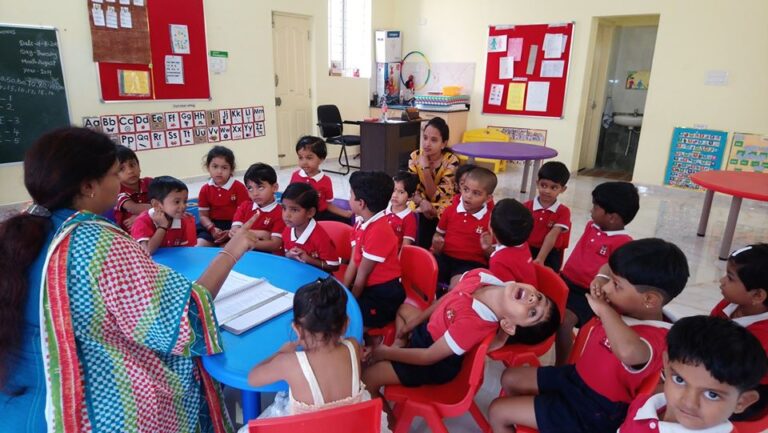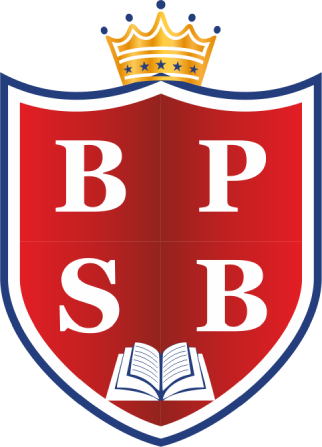Writing

For children, we can see four stages of drawing and writing as the child progresses from 15 months to 3 years old and between 6 and 10, the writing improves and stabilizes. We must give the right writing instruments and activities that are commensurate with the child’s progress.
Creativity helps the child become a thoughtful, inquisitive, and confident learner and later on the child starts expressing in terms of scribbling, colouring, drawing and writing by tuning in to her creativity by experimenting with art materials. As she discovers these cool things called crayons, she grabs them and gets to work, we see her art and writing develop at a steady pace. The child discovers the link between her hand holding the crayon and the line she made on the page: Presto! She experiences the power of cause-and-effect. Imagine how exciting this must be for her! She can now make a real “mark” on the world. This leap in thinking skills is helped along with her new ability to hold things in her hands and fingers. The four stages of drawing and writing may vary from child to child and please note that the timelines listed below are approximations and children may master these skills faster or slower and still be doing just fine.
Stage 1: Random Scribbling (15 months to 2½ years)
This is the period when young children are just figuring out that their movements result in the lines and scribbles they see on the page. These scribbles are usually the result of large movements from the shoulder, with the crayon or marker held in the child’s fist. There is joy in creating art at all ages, but at this stage especially, many children relish the feedback they are getting from their senses: the way the crayon feels, the smell of the paint, the squishiness of the clay. And for a few other children, this sensory information may be too much and they may not enjoy the art activities at this stage (like finger-painting) but as they grow they will start creating output.
Stage 2: Controlled Scribbling (2 years to 3 years)
As children develop better control over the muscles in their hands and fingers, their scribbles begin to change and become more controlled. Toddlers may make repeated marks on the page—open circles, diagonal, curved, horizontal, or vertical lines or zig-zag lines not only on paper or boards but also on the walls. Over a period of time, children make the transition to holding the crayon or marker between their thumb and pointer finger and at this stage, it is important for the teacher and parent to teach the child how to rest the writing instrument on the middle finger.
Stage 3: Lines and Patterns (2½ years to 3½ years)
Children now understand that writing is made up of lines, curves, repeated patterns and follows a particular sequence. They try to imitate this in their own writing. So while they may not write actual letters, you may see components of letters in their drawing. But Indian parents expect their children to write well at the age of 3 years. These might include lines, dots, and curves. This is an exciting time for the child as the child realizes that his drawing conveys meaning! For example, he may write something down and then tell you what that word means, though not necessarily the same as written and much comes as an afterthought which is quite normal. This is an important step toward reading and writing.
Stage 4: Pictures of Objects or People (4 years to 6 years)
Many adults think of “pictures” as a picture of something. This ability to hold an image in our mind and then represent it on the page is a thinking skill that takes some time to develop. At first, children name their unplanned creations. This means that they finish the picture and then label their masterpiece with the names of people, animals, or objects they are familiar with. This changes over time. Soon we will see our child planning before drawing what she will create. We will also see more detail in the pictures, more control in the way our child handles the crayons or pencils, and the use of more colours. Once the child begins to purposefully draw images, she has mastered symbolic thinking. This important milestone in thinking skills means that the child understands that lines on paper can be a symbol of something else, like a house, a box, or a person. The child also begins to understand the difference between pictures and writing. So we see her draw a picture and then scribble some “words” underneath to describe what she has drawn or to tell a story. When the child shares her story with us, she will be motivated to draw and write more as she grows.
Stage 5: Letter and Word Practice (5 to 7 years)
Children have had experience with letters and print for a few years now and are beginning to use letters in their writing works. Usually, children start by experimenting with the letters in their own names, as these are most familiar to them. They also make “pretend letters” by copying familiar letter shapes, and will often assume that their created letter must be real because it looks like other letters they have seen (Robertson, 2007).
During this time, children also begin to understand that some words are made of symbols that are shorter and some words are made of symbols that are longer. As a result, their writing improves. Rather than one long string of letters or letter-like shapes, our child’s writing now has short and long patterns that look like words or sentences. While these letters and words are probably not technically correct, it does not matter. This exciting milestone means that our child is beginning to understand that text and print have meaning. Writing and Phonics go hand in hand for improved pronunciation and recognizing the forty-two sounds of phonics.
What Can You Do to Encourage Art and Writing Skills
- Make art a regular part of the child’s daily schedule.
- Offer chunky, easy-to-grip crayons, thick pencils, and markers.
- Give plenty of used paper for the child to scribble on.
- Give child-safe scissors and glue.
- Provide homemade dough as part of the child’s creative time.
- Don’t give repeated instructions
- Display child’s artwork and writing work in her room.
- Sit by the child and take pleasure in the child’s creation.
- Notice the process, not the product.
- Compliment children on their successes by saying Wow, that’s a house? That’s great!
- Encourage the child to tell more about the picture. Then see if the child is interested in sharing more.
- Experiment with a variety of art materials as the child crosses age three.
- Always encourage the child’s attempts to write.
- If the child scribbles something and then tells you what he “wrote,” take it seriously.
- Encourage the child to make her own “shopping list” to the supermarket or mall.
- This is how the child knows her work is valued and important.
WHAT AND HOW WE DO AT TBPSB
Teachers at TBPSB encourage children tap into the magic of their own imaginations and represent their ideas on paper. As we know creative expression lets children feel more liberated. TBPSB specializes in providing proper writing instruments and opportunities to write. We have writing-centres which contain crayons, paper, boards, colouring materials, picture outlines, etc. We encourage and provide opportunities to the child to engage in writing while ensuring child properly learns how to hold a crayon.
Teacher provides support (scaffolding) through:
- Modelled Writing
- Shared Writing
- Interactive Writing
- Guided Writing
- Independent Writing
P.S. Is your child a lefty? You may ask the school coordinator to share the document which gives tips to improve a left-handed child’s handwriting.


